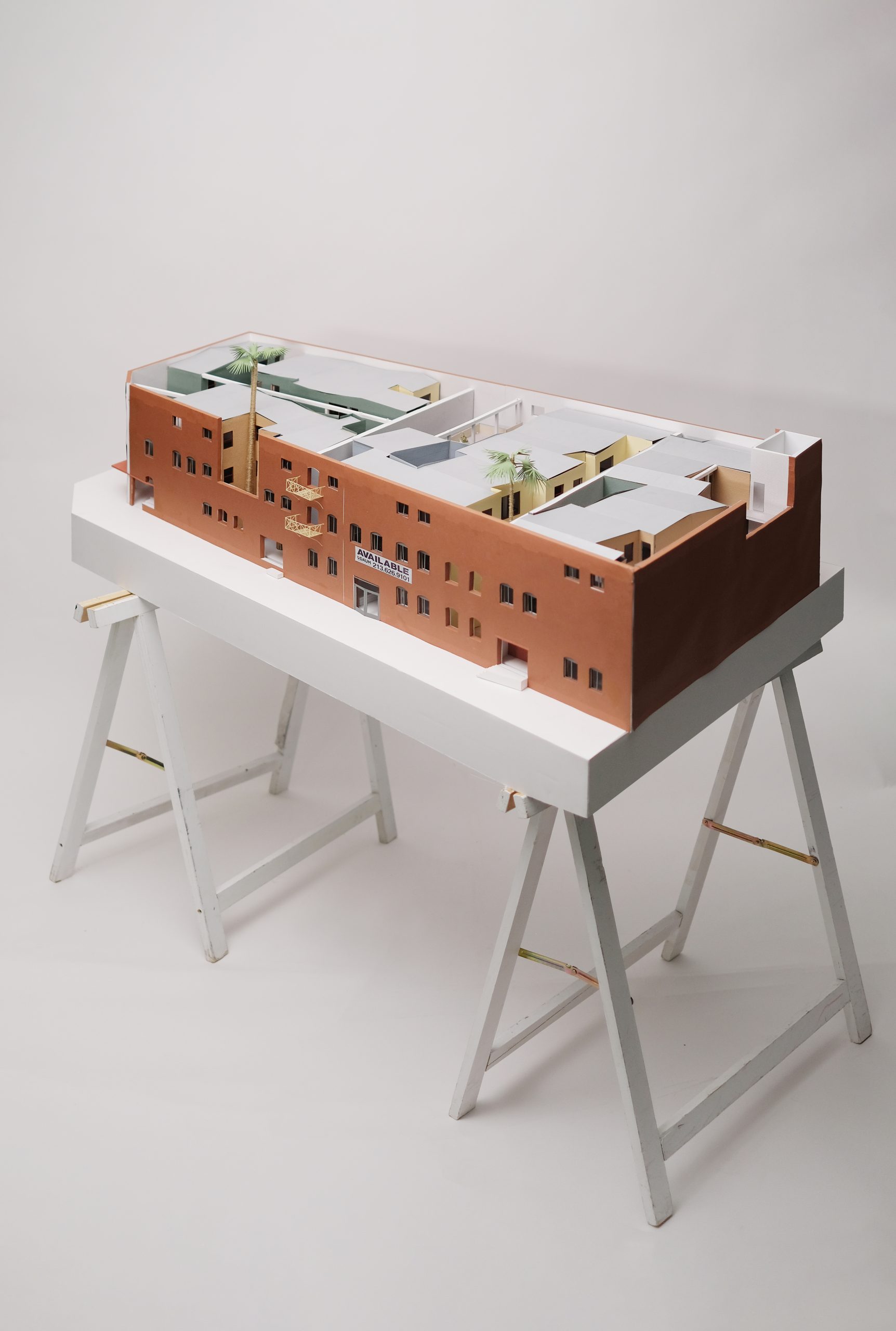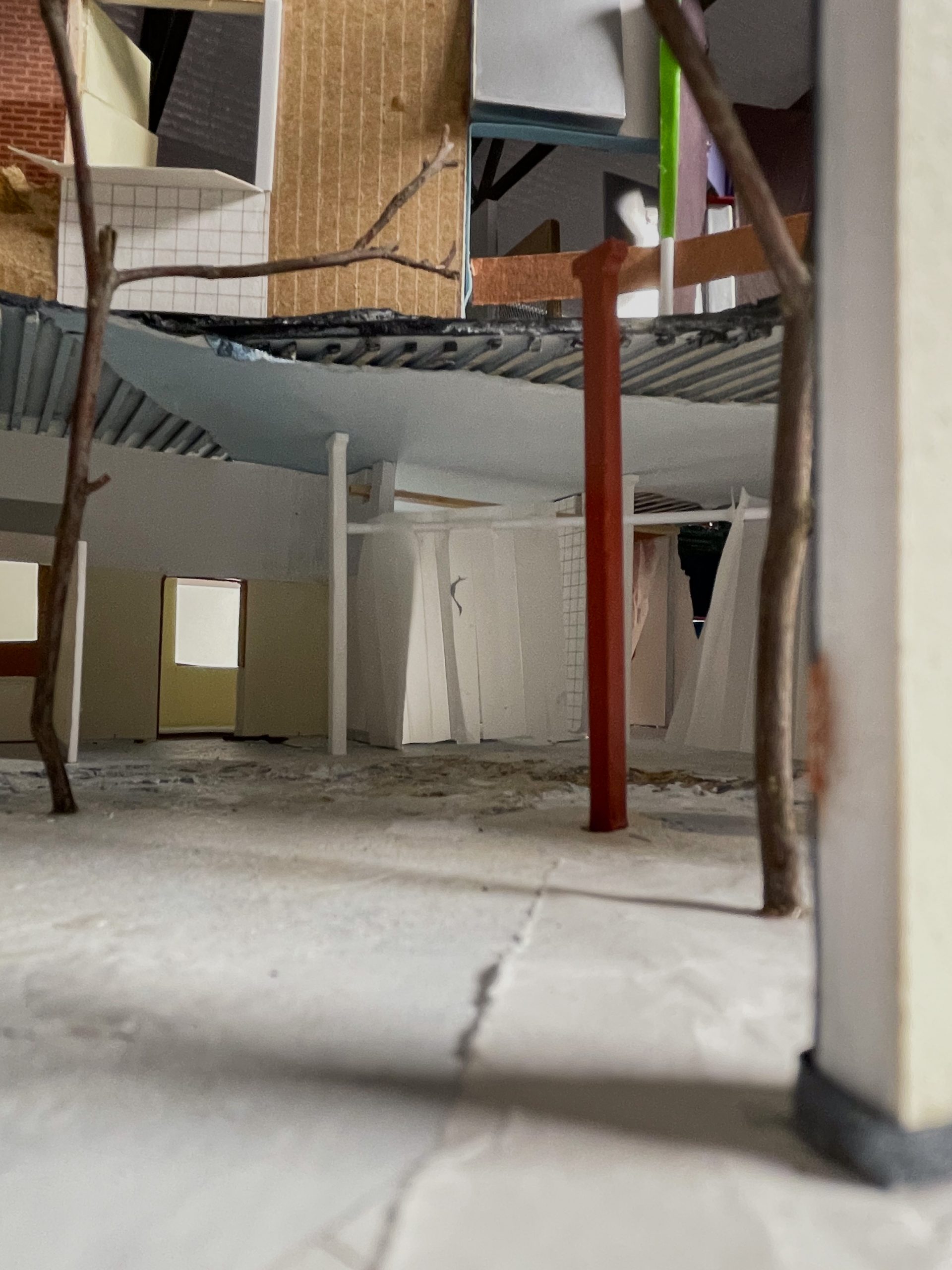Luigiemanuele Amabile in conversation with Thomas Padmanabhan.
In a context of multiple crises like the one we are experiencing, architecture has little room to shape public discourse. The contemporary design process – so complex and shaped by countless variables – makes the coexistence of teaching and professional practice one of the few viable ways to explore alternatives and envision possible futures. Thomas Padmanabhan, who collaborates in education with his partner in practice Oliver Lutjens, seeks to stimulate imagination, empowering students to construct a tangible world through architectural design. This highlights the critical role of bridging architecture schools and professional practice, fostering a collaborative approach that balances intuition and control, imagination and pragmatism – while embracing the diverse contributions the world offers architecture, and how architecture might meaningfully respond.
—
LA: How do you organise your design studio?
TP: No, we felt that the problem with the typical studio design is that you approach a project from the outside – and only very late in the process do you become fully immersed and begin to see the project from within. We wanted to invert that process: to create an “inside view” as early as possible and work from within quickly. We said: let’s put intuition at the beginning. Intuition takes you far. Then, as a second step, you analyse your own intuition. We believe intuition is powerful because it carries an inherent intelligence that helps you synthesize seemingly contradictory aspects of a project – say, the façade and the plan, or urbanism and form. When you do that, you get results. You get plans, you get models. Sometimes, in the second step, you need time to rationalize and understand why you did something – not necessarily to change it.
LA: Would you say that a great deal of intelligence and sensitivity is embedded in that initial intuitive act?
TP: Exactly. And in the second step, you slow down and analyse what you did – and draw it. We often insisted, for example, that students not treat their sketches as just diagrams. We told them, «It’s not a diagram, it’s the design». Sometimes we asked them to scan their sketch and redraw it because it contained far more information than they realized: proportions, relationships between parts, elements, even line weight – everything carried meaning. We kept revisiting that initial sketch many times during the process. It helps students dive into their project quickly and reduces the anxiety that creative people – students, professionals alike – often feel at the start. After three weeks, each student has a project. That’s comforting. Everything after that is just development. So they’re not left wondering, «Do I have something, or do I have nothing?».
LA: Through this approach, you’re also emphasising the importance of process.
TP: Yes, we deeply believe in process – doing many small steps, one at a time. The smaller the step, the clearer your thinking. It’s like in a scientific experiment: if you change just one variable, you can evaluate its impact. But if you change three things at once, you won’t know why the outcome is good or bad.
LA: It looks like you are pushing for artistic intuition at the beginning, but then applying a kind of control – almost scientific – later on?
TP: I wouldn’t even say scientific – more empirical. And also discursive. Because architecture is a public, communal art. When you bring subjective material into the studio, you’re placing it in a sort of small society – the studio – which stands for the larger society. Student peers will ask, «Why did you do this here?» or «Why that there». Suddenly, the project is understood as communal, not just individual. And showing that these two aspects – individual and communal – aren’t contradictory is crucial. We believe you can only do something good for others if it’s also good for you.
LA: At ETH Zurich, there has been an ongoing discussion about the relationship between architectural education and practice. What you’re describing seems to reflect that alignment. Could you elaborate on how you manage that relationship?
TP: For us, it comes naturally. Both in teaching and in practice, it’s a collaborative process. Initially, it was just Oliver Lutjens and me, but now we have a larger team. And for us, the project conversation is the heart of everything. We sit at the table and talk, work physically on the model, on the plan. We literally print plans and draw on them by hand – using white-out, pen, whatever. It’s not abstract sketching; it’s physical, tangible work. And when you work like that – on the artifact of the plan – anyone in the team can contribute. It’s not about the genius line or some individual vision. I can work on one corner, a colleague on another, and it all gets layered together and integrated back into CAD. What we try to teach – something we weren’t taught ourselves – is to take one step at a time. Whatever you know, draw it, build it, visualize it. Then look at it, reflect, and take the next step.
LA: That brings something else to mind. What are the key differences between how you were taught and how you approach teaching today? You’ve studied in several places and worked with major figures – how has that influenced your studio methodology?
TP: That’s a very interesting question. Oliver and I had quite different educations. He would probably speak about the influence of Hans Kollhoff, whose teaching had a huge impact on his understanding of process, seriousness, and precision. I studied in Aachen. At the time, the teaching was structured mostly around the profession, but lacked cultural depth. I felt that right from my first year. I was lucky to study with Jan Pieper, who brought a sense of anthropology to architectural history. His teaching opened up a world of meaning and possibility. But there was also a kind of nihilistic view of the profession in some of the rest of the curriculum. Later, I studied in Rome with Paolo Angeletti. He wasn’t a particularly prominent designer, but he was a deeply thoughtful figure – rooted in history but attuned to the present. Then at Cornell, where I did my master’s, I worked with Arthur Ovaska (Hans Kollhoff’s former partner), Simon Ungers, and Lee Hodgden – one of the last of the Texas Rangers. That environment was imaginatively rich. But I only saw the connection between cultural ambition and built work when I joined Diener & Diener. There, Roger Diener exemplified how serious and sensitive a creative search could be. Even though their buildings look confident and stable, the process was full of doubt and fragility. That was eye-opening for us.
LA: It’s fascinating how these diverse cultural and educational influences have shaped your approach. Would you say your practice operates on the same ethical foundation as your teaching? How do you maintain that alignment?
TP: I wouldn’t say we’re better than others, but we try. In our practice, we address issues like the cost of housing, urbanism, social responsibility. We’re also interested in the societal implications of architectural language. In teaching, we want to empower students. Of course, we also transmit values, but we want them to be confident and articulate. As practitioners, we learn to absorb many external demands. We believe in inclusive architecture – not exclusive. That means not purifying or distancing ourselves from life, but including everything. That inclusivity reflects what kind of society we want to live in. And it helps students become agile – not opportunistic, but flexible. We teach architecture as an affirmative profession, not a critical one. We want students to see every building as a contribution, not a commentary.
LA: Do you intentionally place more emphasis on affirmation and encouragement, even while recognising the necessity of making critical choices?
TP: Exactly. Design still requires tough decisions and hard work. But we think society today – especially in pluralistic democracies – is more open to diversity than our field is. So why shouldn’t architecture reflect that richness? We see it as a good thing.
LA: It seems you think that one of the most important aims of today’s design studio is to cultivate an attitude of engagement and the ability to navigate the complexities of architecture and time.
TP: I’d say we need more joy. The joy of moving through the world openly, working with what you’re given. Sure, in Switzerland we’re often privileged, but freedom as an architect isn’t given – it’s discovered. You find it in the cracks: a law changes, a site opens a possibility, a client makes room for something new. Anselm Stalder, a Swiss artist, speaks about deficit spaces. These are the gaps in a shifting world, spaces that open up, where new things can happen. In architecture, it’s the same. Program, budget, law – none of them are stable anymore. So you have to be curious and alert to find those openings.
LA: You’ve consistently worked as a visiting professor. Was this a conscious decision? How has that influenced your approach to education?
TP: We like teaching together, and permanent positions sometimes don’t allow that. But the experience has been incredibly enriching. Changing schools, cities, and meeting new people forces you to adapt your teaching. Every school has its strengths and weaknesses. For example, at TU Munich, students had a strong foundation in urbanism and the city – but that strength sometimes meant they avoided questioning things. So we had to push them. At Harvard GSD, the students were incredibly fast and talented, but there was no common base to build on. Still, we found the diversity enriching.
LA: Could it be that this visiting model actually supports the kind of teaching you value? Would the freedom and adaptability be harder to maintain in a permanent role?
TP: Exactly. The longer you teach, the more you need to structure and conceptualize your ideas. But with permanence, you also build shared knowledge with students and colleagues. At Harvard, we only taught every second semester, so there was little continuity. Maybe we’d have to theorize more if we were in one place full-time. But even then, we’d still want to keep the strong connection between our practice and our teaching.
LA: I believe that too. Thank you so much.
______________________________________________________________________________________________
Luigiemanuele Amabile – Architect and PhD, research fellow of the project DT2 (UdR Università degli Studi di Napoli “Federico II”).
Thomas Padmanabhan – Architect at Lütjens Padmanabhan Architekt*innen.




